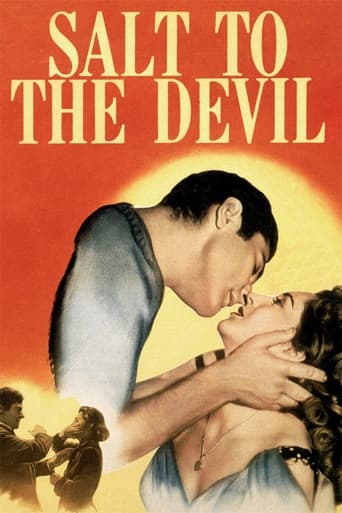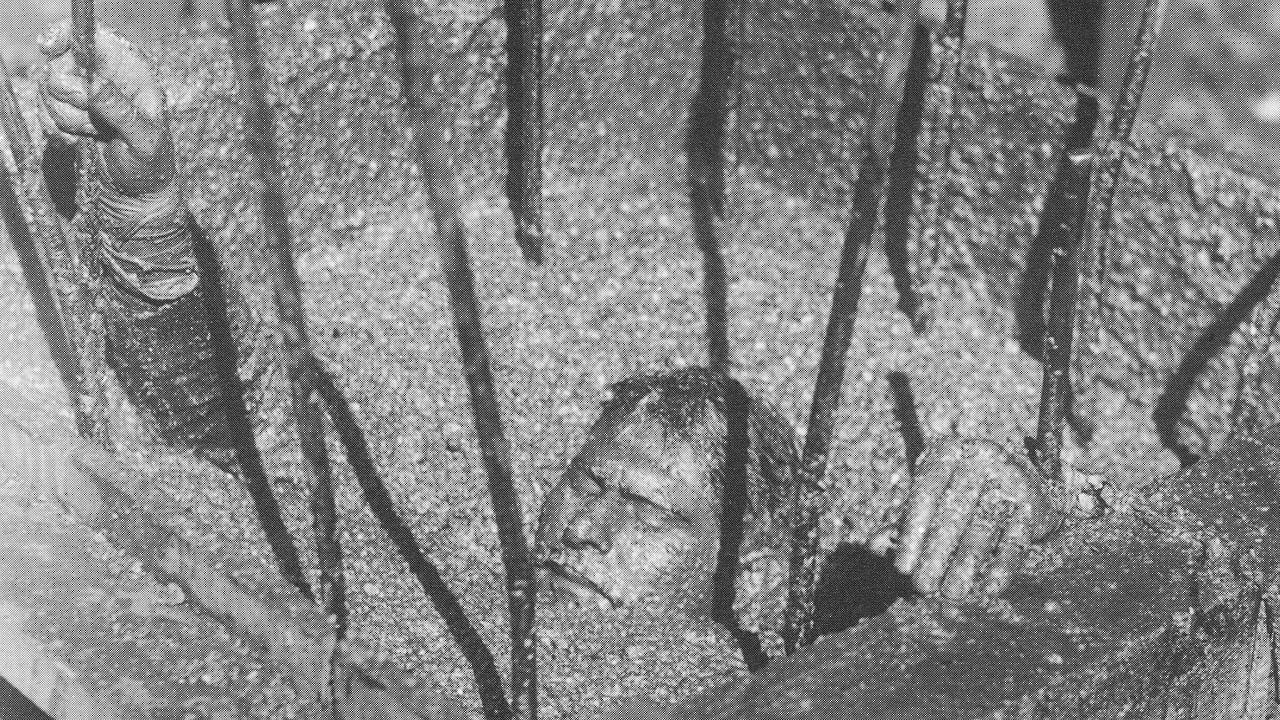MartinHafer
This film has an interesting pedigree. It was made in England--even though it's a story set in New York's 'Little Italy' (it's next to Chinatown in the southern portion of Manhattan). The reason for filming in the UK was that the director, Edward Dmytryk, was one of the famed Hollywood Ten who refused to testify before Congress and were imprisoned and blacklisted. And I am sure this had a lot to do with the film subsequently being pulled from circulation shortly after it's US release.The film begins with a bit of domestic violence. What led up to this is uncertain, as so the film now goes back a decade to show, very slowly, the events leading up to this. Geremio (Sam Wanamaker) is a bricklayer. He works hard and has friends, but his life is tough--and money is far from abundant. However, he decides one day that he should be married and asks a neighbor (Kathleen Ryan)--and she refuses him. Then, a friend helps him obtain a wife from 'the old country' (Italy) and he marries a woman he's never even met (Lea Padovani). The problem, however, is that he'd written her about his life--and lied about having a little house. Instead, he only had a crummy apartment. But, to hide his lie, he rents a house for their honeymoon--and she only learns at the end that it's NOT her new house.Despite this HUGE surprise, the marriage somehow stays strong and through the next decade they have four kids and life, though tough, is good. However, when the Depression arrives, Geremio is disheartened and during the course of this part of the film, his soul seems crushed and the need to feed his family becomes his all-consuming goal. As a result, he's willing to become foreman on a dangerous and substandard job--one that is just a huge disaster waiting to happen. What happens next, I'll let you find out for yourself---but it's pretty shocking as Geremio vacillates between allowing his soul to fester or overcome this dark period. I guarantee that you WON'T be able to guess what will happen next.There is a lot to admire about this film. Wanamaker, while not exactly a household name and easily recognizable face, was great in this film. And the director did a great job setting the mood. I really must admire this film. However, I also need to point out that it's not exactly a pleasant film. At times, it's rather depressing, in fact. And, it does NOT have a happy Hollywood-style ending. But, I admire how the film was willing not to be clichéd and happy. Well worth seeing, but certainly not a film for everyone.
rnc55
This movie does have some great noirish/neorealist visuals, and it tells a story that is refreshingly free of Hollywood's sugar-coating, which was only possible because it was essentially an independent foreign film. But some of the scenes go on for much too long (the wedding, especially), and I found the exaggerated acting and unrealistic dialog to be more fit for the stage than for the silver screen.The dialog was particularly distracting, and it seemed to get worse as the movie went on. Most of the characters were either Italian-Americans or Italian immigrants living in New York in the twenties and thirties, but their dialog sounded like they were practicing lines for a Shakespeare play while they mixed cement and laid bricks. Toward the end I was laughing, and not because the filmmakers wanted me to. I guess the stilted poetry could be defended by saying that the characters would have been speaking Italian, and the dialog is a literal translation of how they would really talk. But it absolutely did not work for me.Another line of dialog made me laugh for a different reason: the main character's son, born and raised in New York in the 1920's, suddenly picks up a lovely lilting British accent. I'm only guessing this had something to do with the fact that the movie was made in England.I give this movie an 'A' for effort and intention, but a considerably lower grade for execution.
green4tom
Have I seen this film?! Only every time I teach an urban sociology class, when I show it to my students! I can only echo the previous commentator--what a great film! The best scene--and there are many--is during the Great Depression, when the five bricklayers decides that it is Julio, who starving mouths to feed, should get half a day's work. Then, through a store window, Geremio catches one of the other bricklayers panhandling. "Heaven has forgotten us!" his workfellow says. This film, whose story was written by an Italian socialist (DiDonato) and made by socialists in London (couldn't make it in New York--it was the McCarthy period, may he rest in pieces!) is, besides being dramatically and emotionally rich, is sociologically rich. It's a brilliant portrayal of the conflict between the individualist version of the American Dream among immigrants--and the sordid reality they face. When they face it collectively, they are great men and women, in all their splendor. When they face it individually, they become alienated from themselves and each other. Though the DVD is entitled CHRIST IN CONCRETE, it is actually the prequel to the story in the novel. The last horrific scene is the first chapter of the novel, which detail's the life of Geremio's widow, Annunziata, and their son Paul, after Geremio dies. All the actors are great--but I especially like Lea Padavini--who had to learn the part phonetically, because when they hired her, she didn't speak a word of English! I also highly recommend this film
dsmith-7
I saw this film many years ago on television and was quite stunned by it. This very simple drama of the life of an ordinary working man is turned into high tragedy through the wonderful talents of the filmmaker. The film is all the more impressive when one considers that it was made on the cheap in London, though set in New York. The low budget gives rise to one or two false notes, but the story is so well told that you easily forget about those. Perhaps the lack of budget was a blessing, in that it allowed the actors and director to concentrate on the more ineffable qualities of story-telling. I would love to see this film again. It should be revived so that many more people can appreciate the great talent of Edward Dmytrk and the social-realist style, of which it is a wonderful example.


 AD
AD


